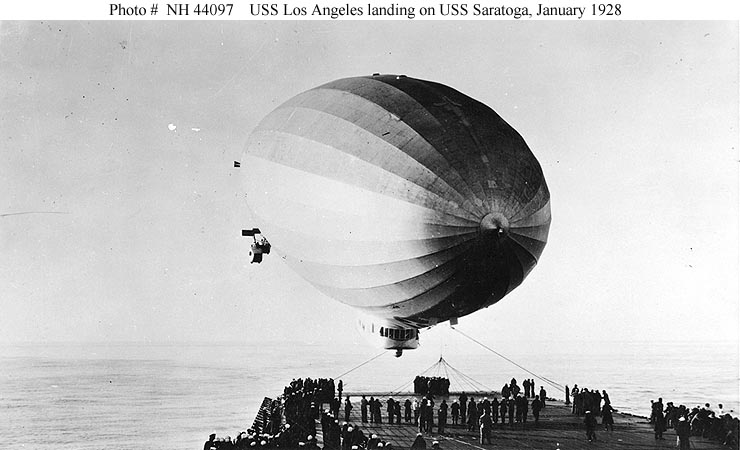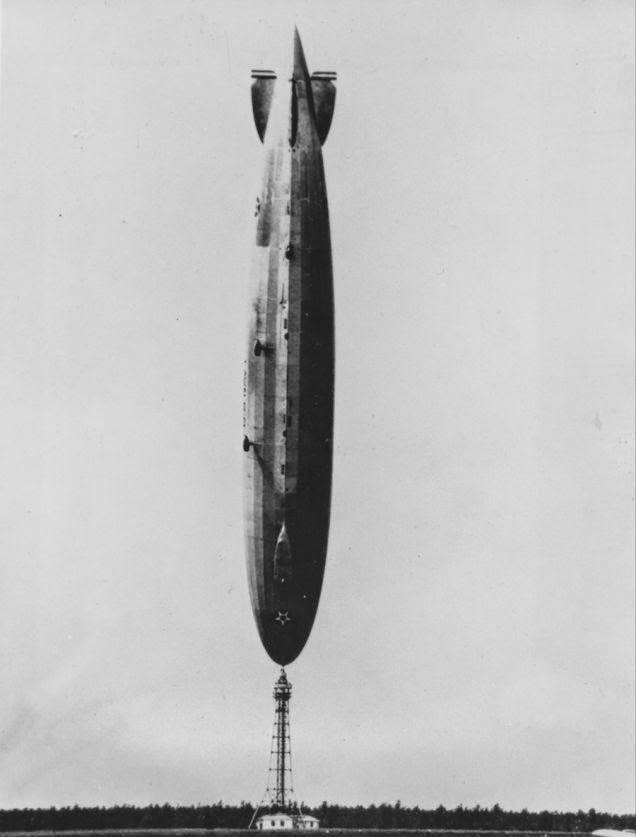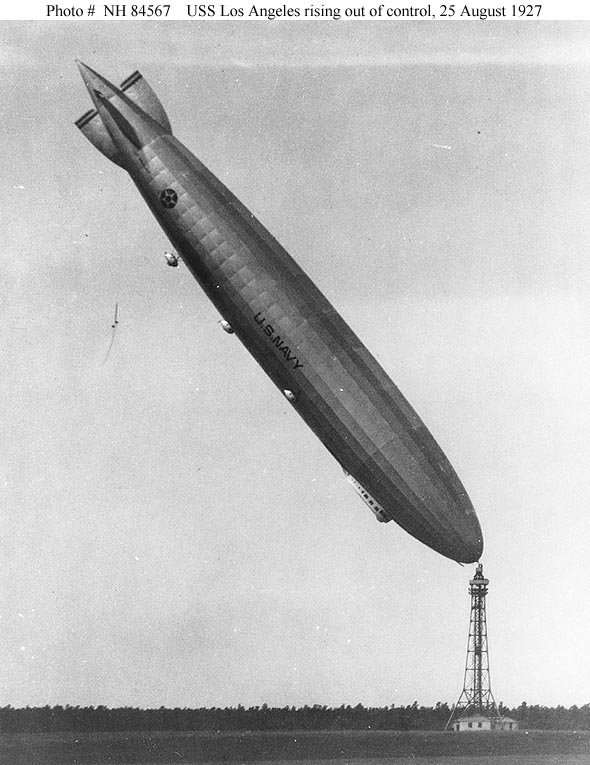Not really. Aircraft keep subs submerged because subs are very vulnerable to all types of attacks on the surface if they're spotted, and aircraft are good at spotting submarines. Blimps are, in principle at least, more effective at this per aircraft than other types because they have a much longer endurance than other types of aircraft, therefore they are more effective in preventing attacks (because submarines are too slow underwater to catch all but the most sluggish ships) than other types of aircraft.
Lets parse this out. Subs are scared of aircraft because the presence of aircraft might lead to a dangerous attack - there has to be some sort of credible threat. What sorts of attack might be dangerous? Those from warships or aircraft. Therefore a blimp is effective because it can call in ships or heavier-than-air aircraft. On the other hand, a conventional aircraft is dangerous because it can call in ships, other aircraft, or make an attack itself. So if you are able to provide aircraft on-station to support blimps scouts, why not just have them do the scouting themselves? Again, a blimp cannot do the things a normal aircraft can do, but a normal aircraft can do all the things an airship can. To make a passing swing back to the OP, this is exactly what the flying carrier does - attempt to answer the question "how can I use airships to get conventional aircraft to the submarine?". More sensible to just focus on the aircraft and forget the airship part, IMO.
Endurance-wise, K-class blimps were impressive, they could fly more than 24 hours. However note that the Catalinas and Liberators could do up to 18 hour missions, carry all the necessary sensors, more weapons, and make credible attacks - escorting effectively even in the absence of any other ASW assets. They could also transit to and from patrol areas a heck of a lot faster, which probably meant a similar amount of time on-station in the mid Atlantic. Aircraft on a MAC make the whole endurance thing moot, they are there on-site with immediate reinforcements to hand.
Let's not forget that blimps made no contribution to closing the mid-Atlantic gap, which is where one might expect their endurance to come in most useful.
The point is that you might be able to slice things up so that airships use less of some resources than heavy bombers do. Use crappy surplus engines that wouldn't work for a bomber but are fine for a wallowing blimp.
Yes, you might. Or instead just use some of the obsolete wallowing bombers you have cluttering up your airfields. Hard to see how building brand new highly unconventional aircraft is going to be cheaper and easier than using ones already bought and paid for. The saved money can go to converting some rust buckets to carry biplanes and maybe some high-end aircraft for long-distance work.
And what was the rate for conventional aircraft? Without that information, the statistics you've provided are completely useless.
There are none so blind as those who will not see. These statistics cover an area where blimps never operated due to the Luftwaffe threat and cover hundreds of attacks with five sinkings, when we know blimps achieved precisely one attack with zero sinkings. They are very obviously for conventional aircraft. Comparison is easy, just divide nothing by either 500,000 or 400,000 hours (depending on source) of blimp patrols.
The U-boat message, recorded, said there was damage. The record, uncovered post-war, resulted in the crew having their scolding revoked, replaced by commendation.
Which records? Uncovered by whom, when? All my searches found only anecdotal references to "searches of the German archives" or "top secret radio intercepts declassified by the British", usually accompanied by tabloid level inaccuracies. No official documents, other than an intercept transcript of what is almost certainly U-134 reporting a different attack, but with 'blimp' scribbled optimistically on it.




